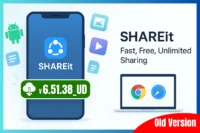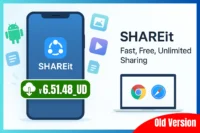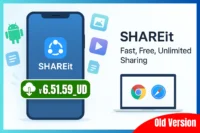SHAREit vs Bluetooth: The Ultimate Speed & Feature Comparison (2025)
Published: 27 Jul 2025
Introduction
Transferring files wirelessly is an integral part of our daily Device usage. Two popular methods for this are through Bluetooth, which has been around for a long time, and SHAREit, which utilises a special process called Wi-Fi Direct to transfer files quickly. This article will provide a straightforward comparison of the two options, enabling you to understand the differences and choose the best one for your needs without getting lost in technical details.
Core Technologies Overview
- Bluetooth
- Uses a type of radio technology that consumes little energy to send data over short distances.
- It’s common to connect devices like headphones and keyboards to other devices.
- Supports micro-transfers and low-battery operations.
- SHAREit
- Utilises Wi-Fi Direct to facilitate high-speed device-to-device transfers.
- Optimised for large files and cross-platform compatibility.
- Does not require internet connectivity for transfers.
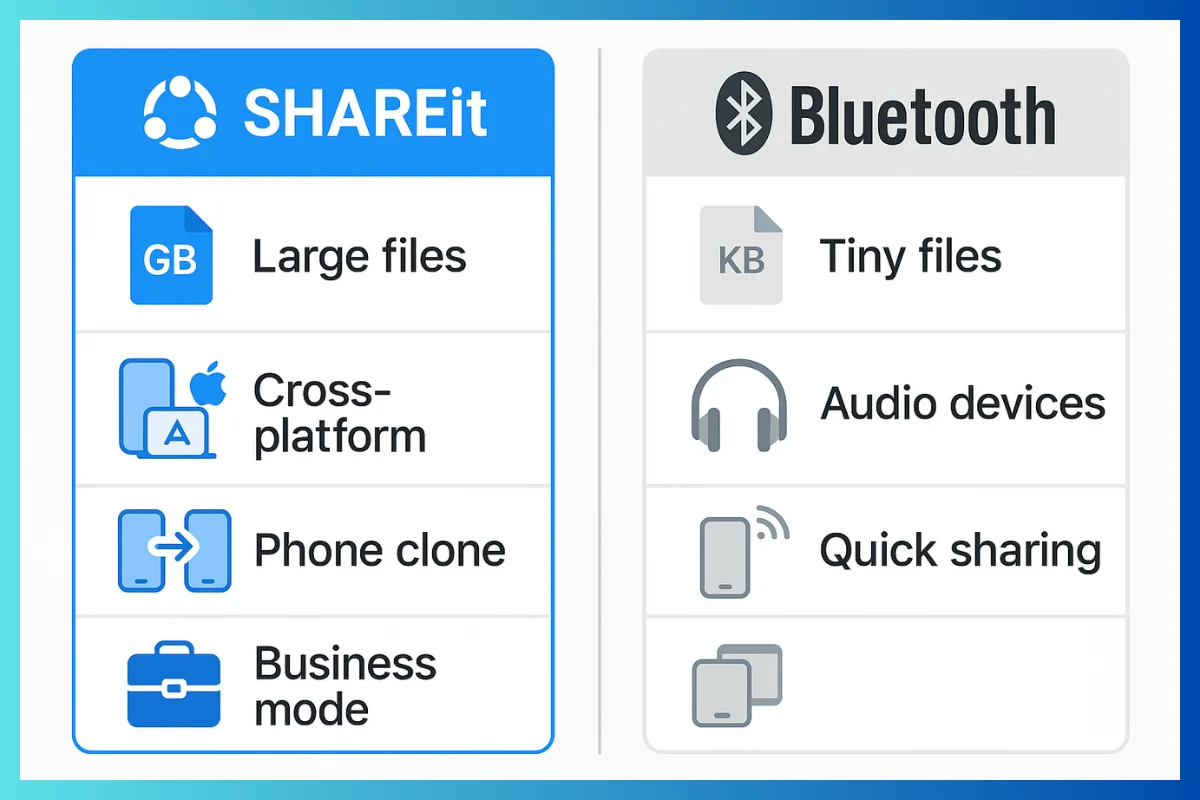
Speed Test Results (2025 Real-World Data)
Comparison of File Transfer Technologies
Technology: Bluetooth
- Maximum Speed: 2.1 Mbps
- Typical Speed (for a 1GB file): About 0.7 MB/s
- Speed Comparison: This serves as our reference point.
Technology: SHAREit
- Maximum Speed: Over 40 MB/s (using Wi-Fi 6E)
- Typical Speed (for a 1GB file): 20 to 200 times faster than Bluetooth
- Speed Comparison: SHAREit is significantly faster than Bluetooth.
Test Summary:
Comparisons were made by transferring a 1 GB video file between two Android devices at a distance of 10 meters.
Key Insight:
When transferring files larger than 10MB, SHAREit’s speeds are significantly faster than those of Bluetooth, making it a more efficient choice for transferring larger files.
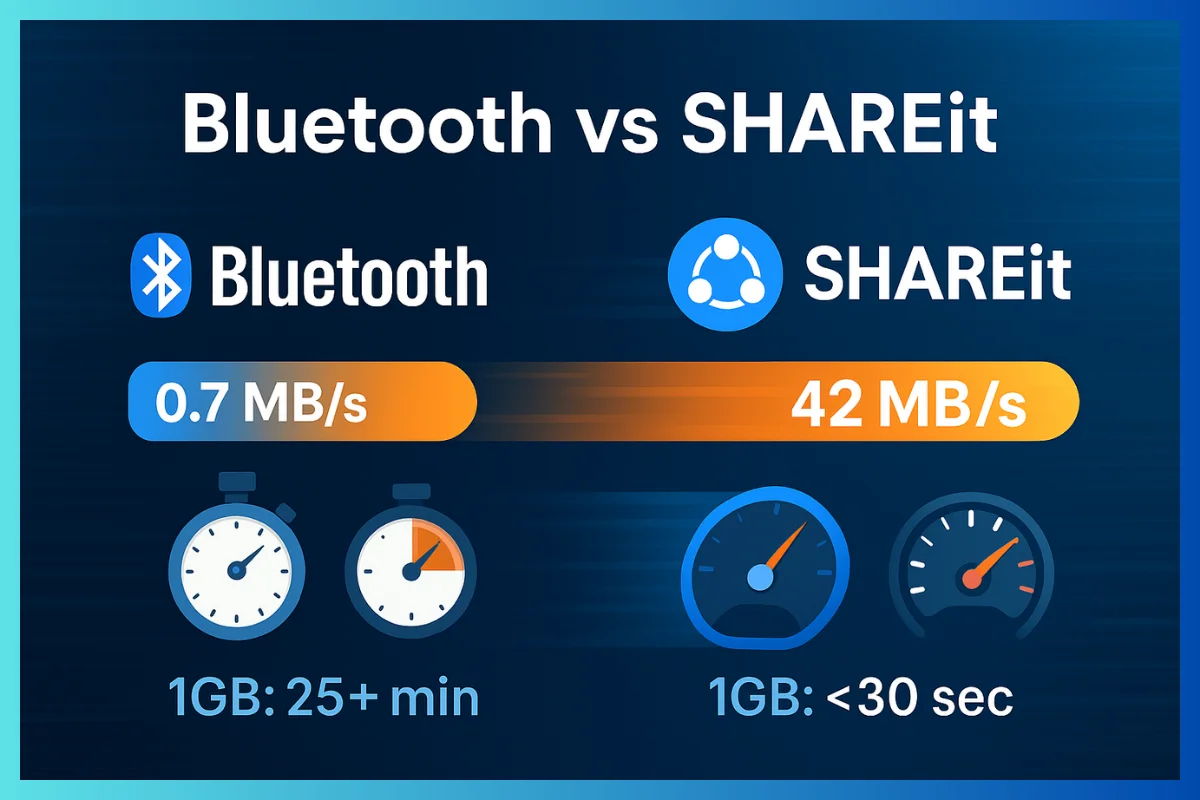
Critical Feature Comparison
SHAREit: When to Choose
- Transfers of large files (HD videos, application bundles, photo collections)
- Cross-platform sharing (Android ↔ iOS, PC ↔ Mac)
- Bulk data moves (entire phone migrations using CLONEit)
- Urgent, time-sensitive sharing (business meetings, rapid events)
- Enterprise needs with “Business Mode” (ad-free, streamlined team sharing)
Bluetooth: When to Choose
- Micro-transfers (contacts, documents less than 10MB)
- Low-power tasks (battery conservation essential)
- Peripheral pairing (audio devices, wearables, input devices)
- Quick ad-hoc transfers (no app installation possible)
Security & Privacy Deep Dive
- Bluetooth Risks
- Older versions are exposed to vulnerabilities like BlueBorne (remote code attacks).
- Best Practice: Disable Device visibility when not in active use.
- SHAREit Safeguards
- Utilises encrypted local hotspots for transfer sessions.
- Two thousand twenty-four security patches strengthen privacy.
- Caution: Avoid using SHAREit over public Wi-Fi.
Critical Tip:
Always reject transfers from unknown or untrusted devices, regardless of platform
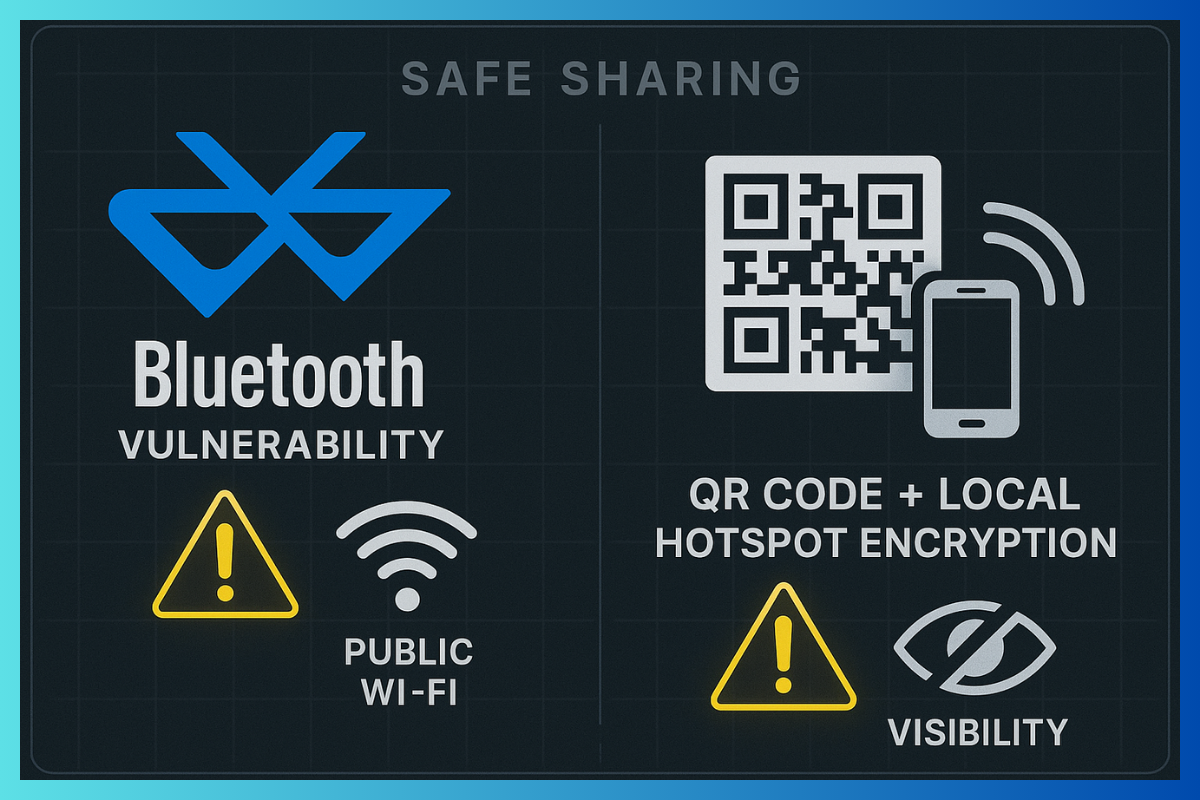
SHAREit vs. Bluetooth: A Simple Comparison
SHAREit Pros:👍
- Speed: SHAREit is very fast, especially when transferring large files.
- Compatibility: It works across various Device types and can send multiple files simultaneously.
- Security: It keeps your data secure with encryption and gets regular updates.
- Battery Use: While it uses more battery for quick transfers, it efficiently sends large files.
- Convenience: You don’t need an internet connection to use it; you can connect by scanning a QR code.
Bluetooth Pros:👍
- Compatibility: It’s built into most devices, so you don’t need to install anything.
- Security: Easy to pair devices without extra setup and generally safer from potential threats.
- Battery Use: Usually consumes less power, making it suitable for smaller file transfers.
SHAREit Cons:👎
- Requires users to have the app installed on both devices before transferring.
- Not the best option for connecting peripheral devices (like printers).
Bluetooth Cons:👎
- Speed: It’s slow for sending big files, working best with smaller ones.
- Limitations: It might not work well with some devices due to connection issues.
Future Trends
- Bluetooth 6.0+: This update focuses more on reliable connections for smart devices rather than Speed.
- SHAREit with Wi-Fi 6E: Expected to achieve fast transfer speeds of over 40 MB/s in 2025.
- Emerging Alternatives: Nearby Share by Google utilises a Combination of Bluetooth for connection and Wi-Fi Direct for fast data transfers, leveraging the best features of both.
This comparison helps understand the strengths and weaknesses of SHAREit and Bluetooth for transferring files between devices.
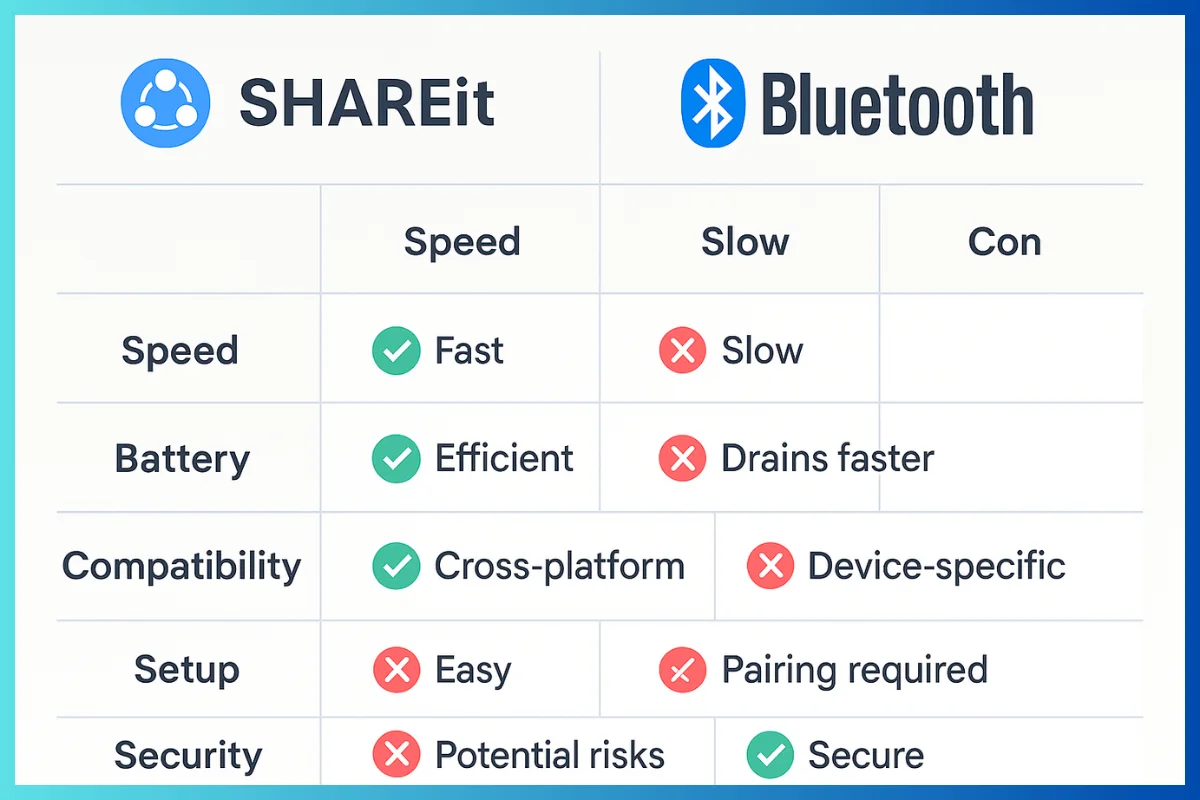
Pro Recommendations
- Use Bluetooth for Device pairing and minimal, ad-hoc transfers, especially when installing apps isn’t possible.
- Use SHAREit for all large file transfers, cross-ecosystem sharing, and high-speed needs.
Hybrid Use:
- Close background apps to boost SHAREit throughput by ~15%.
- Use “Flight Mode + Bluetooth” for optimal, interference-free transfers with either technology.
- Enterprises should utilise SHAREit’s “Business Mode” for secure and efficient group file sharing.
Final Verdict
Bluetooth is for convenience; SHAREit is for performance.
If you often transfer videos, apps, or switch between different types of devices, consider installing SHAREit. It’s a handy tool for those situations. On the other hand, if you’re primarily concerned about conserving battery life or sending small files, using Bluetooth is a suitable option. Both SHAREit and Bluetooth are helpful in today’s world, so it’s a good idea to have both available for whatever you need.
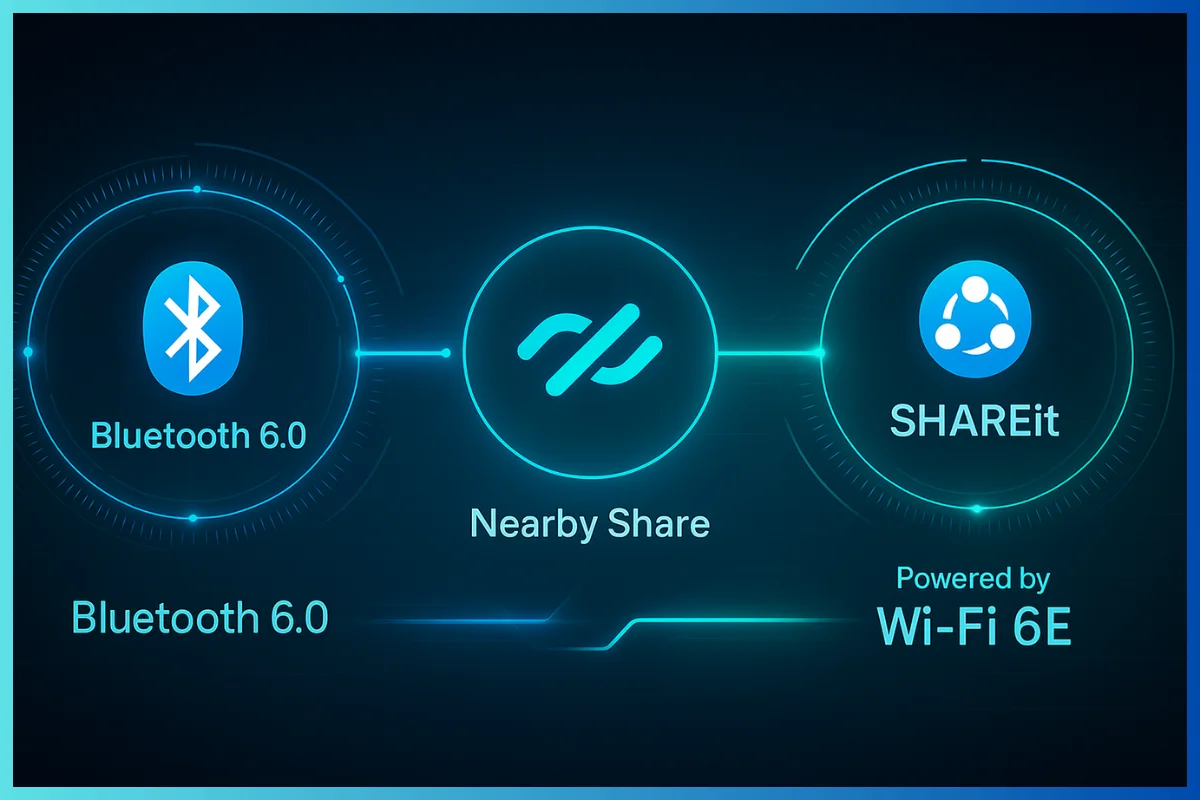

- Be Respectful
- Stay Relevant
- Stay Positive
- True Feedback
- Encourage Discussion
- Avoid Spamming
- No Fake News
- Don't Copy-Paste
- No Personal Attacks

- Be Respectful
- Stay Relevant
- Stay Positive
- True Feedback
- Encourage Discussion
- Avoid Spamming
- No Fake News
- Don't Copy-Paste
- No Personal Attacks
